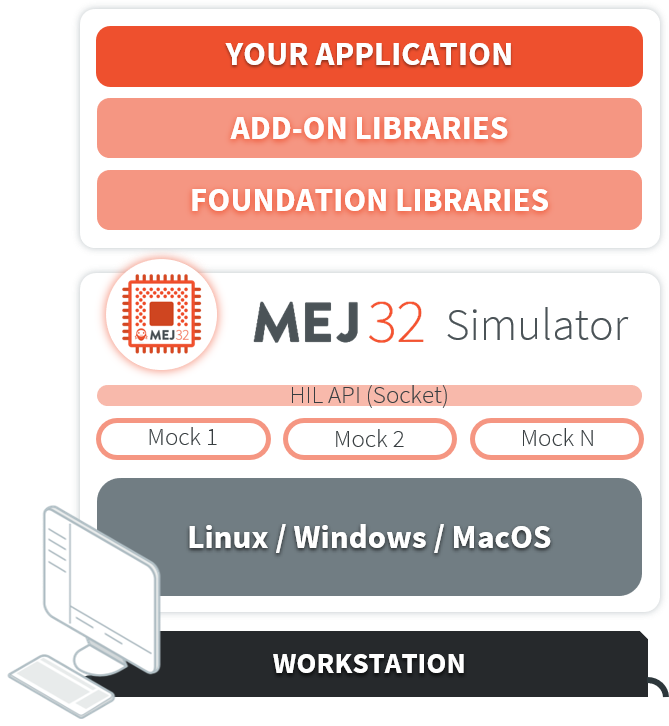Principle
The MicroEJ Platform provides an accurate MicroEJ Simulator that runs on workstations. Applications execute in an almost identical manner on both the workstation and on target devices. The MicroEJ Simulator features IO simulation, JDWP debug coupled with Eclipse, accurate Managed Heap dump, and an accurate Java scheduling policy (the same as the embedded one). [1]
Functional Description
In order to simulate external stimuli that come from the native world (that is, “the C world”), the MicroEJ Simulator has a Hardware In the Loop interface, HIL, which performs the simulation of Java-to-C calls. All Java-to-C calls are rerouted to an HIL engine. Indeed HIL is a replacement for the [SNI] interface.

The HIL Connects the MicroEJ Simulator to the Workstation.
The “simulated C world” is made of Mocks that simulate native code (such as drivers and any other kind of C libraries), so that the MicroEJ Application can behave the same as the device using the MicroEJ Platform.
The MicroEJ Simulator and the HIL are two processes that run in parallel: the communication between them is through a socket connection. Mocks run inside the process that runs the HIL engine.

A MicroEJ Simulator connected to its HIL Engine via a socket.
Dependencies
No dependency.
Installation
The Simulator is a built-in feature of MicroEJ Platform architecture.
Use
To run an application in the Simulator, create a MicroEJ launch configuration by right-clicking on the main class of the application, and selecting Run As > MicroEJ Application.
This will create a launch configuration configured for the Simulator, and will run it.
